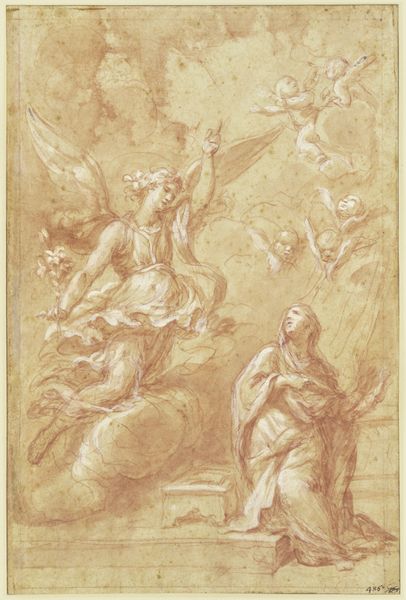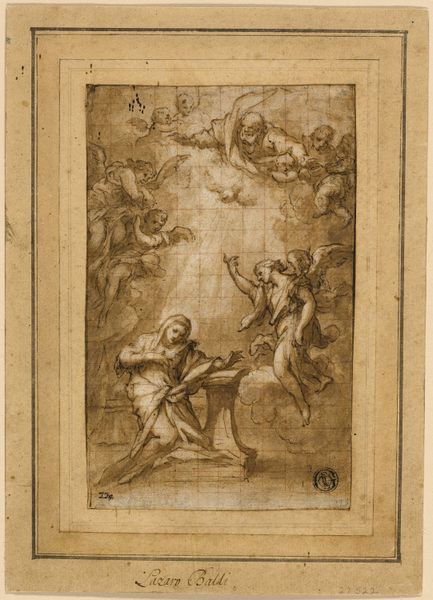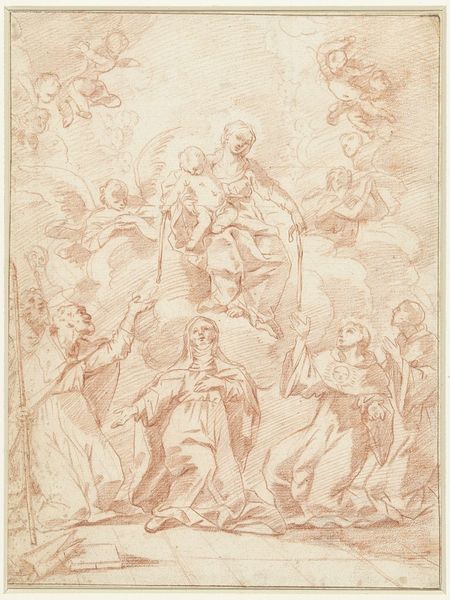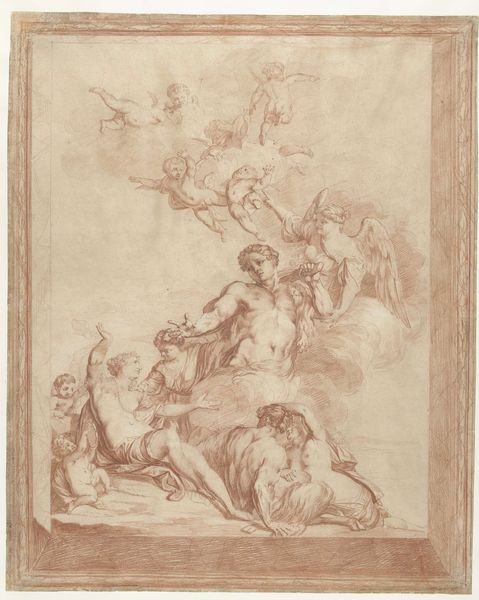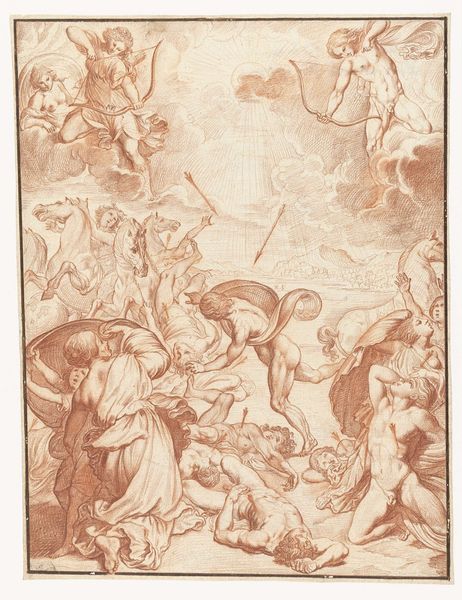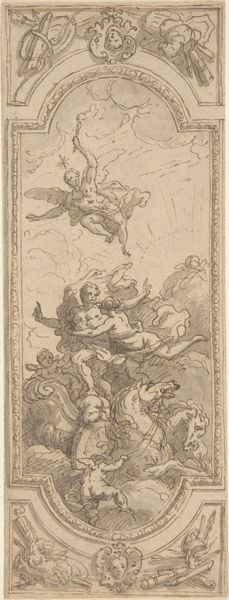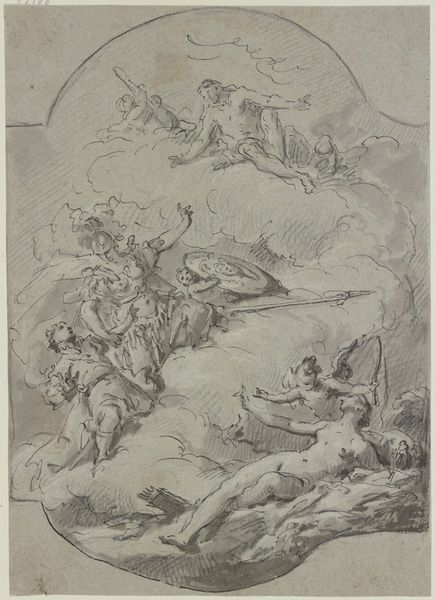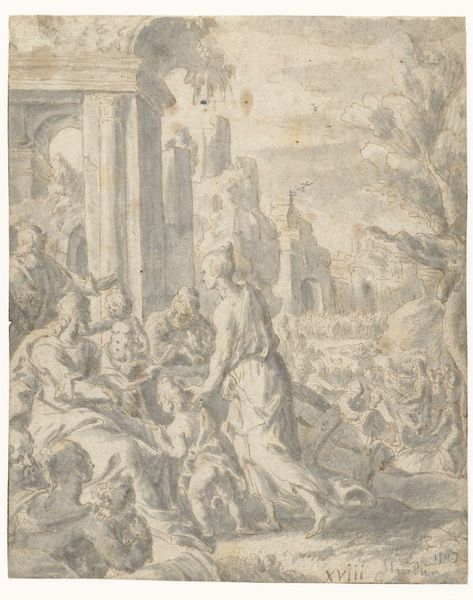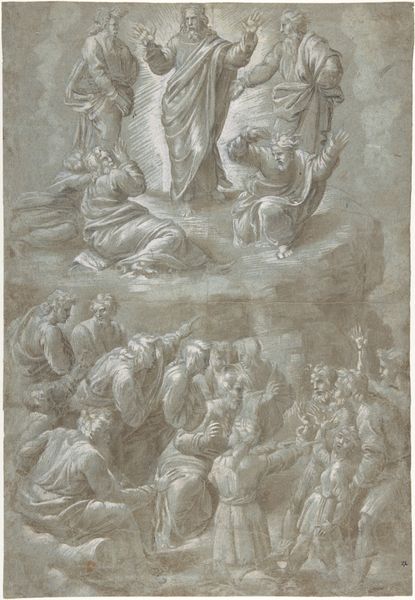
drawing, ink, pen
#
drawing
#
baroque
#
ink painting
#
pencil sketch
#
etching
#
figuration
#
ink
#
pen
#
watercolour illustration
#
genre-painting
#
history-painting
#
watercolor
Dimensions: height 410 mm, width 280 mm
Copyright: Rijks Museum: Open Domain
Domenico Piola made this pen and brown ink with brown wash drawing, Maria met het Christuskind onder een boom, sometime between 1627 and 1703. Piola made this work in Genoa, a republic in present-day Italy with close ties to the papacy. Religious imagery served as a propaganda tool for both the Church and Genoa’s leading families. Note how Mary and the infant Christ are surrounded by cherubs. The figures are idealized according to the aesthetic conventions of the Italian Baroque. They are meant to embody the cultural values of piety, beauty, and harmony. This drawing presents a softened, more human vision of the holy family, as part of a broader trend in Catholic art that responded to the Protestant Reformation. Drawings such as this would have been made in preparation for larger-scale paintings to decorate lavish churches or family collections. By consulting primary sources from the time, like church records, family papers, and artists’ biographies, we can come to a richer understanding of art as something embedded in social life.
Comments
No comments
Be the first to comment and join the conversation on the ultimate creative platform.
